
[212] Liriodendron tulipifera, Tulip Tree
Introduction
Liriodendron tulipifera, the Tulip Tree (or Tuliptree), is one of the largest trees native to the USA. In the UK, where its is cultivated in gardens and parks, it is noted for its unusually shaped leaves and flowers.
It has many other common names – American Tulip Tree, Tuliptree Magnolia, Tulipwood, Tulip Poplar, Whitewood, Canoewood, Fiddletree and Yellow-poplar.
The other Liriodendron species, Liriodendron chinense, native to China may be called the Chinese Tulip Tree.
Its is, of course, not to be confused with [346] Tulips.
Taxonomy
Kingdom – Plants
Division – Vascular Plants
Class – Angiosperms (Flowering Plants)
Order – Magnoliales
Family – Magnoliaceae
Genus – Liriodendron
Scientific Name – Liriodendron tulipifera
Name
It is not named from the shape of leaves but from the shape of its flowers. Lirio-dendron means lily-tree and I will let you work out tulipifera.
Description
You will have to wait until [218] Magnolia for a note on the taxonomic position of Liriodendron. These posts are not written in numerical order.
Liriodendron tulipifera grows to a large deciduous tree.
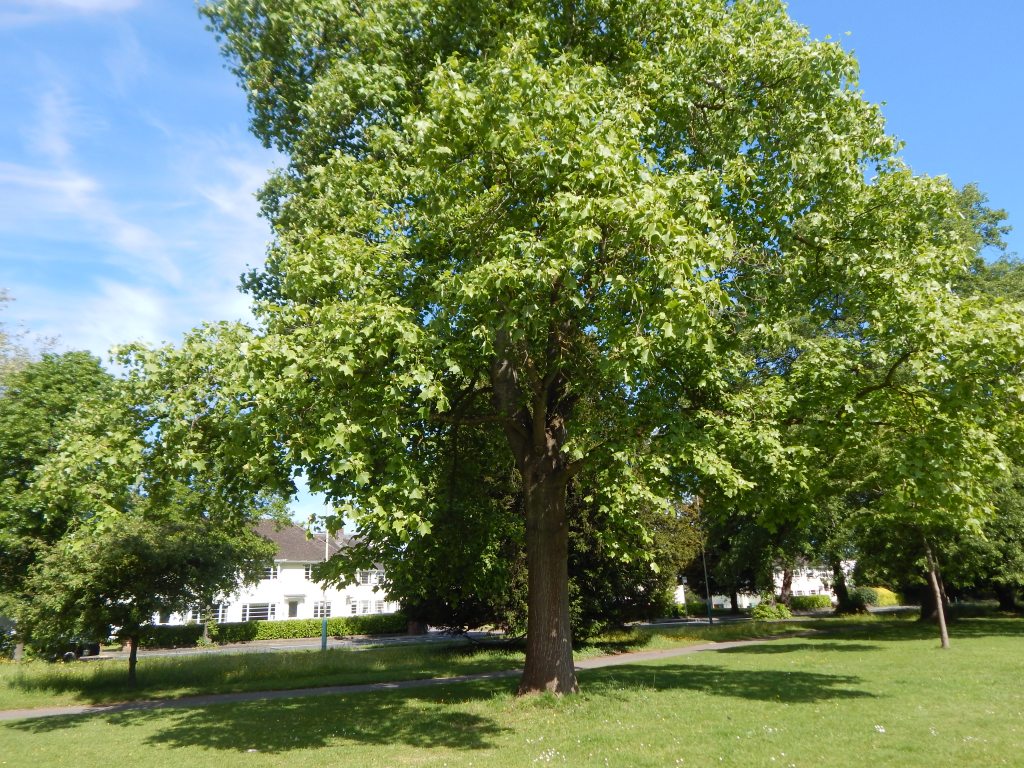
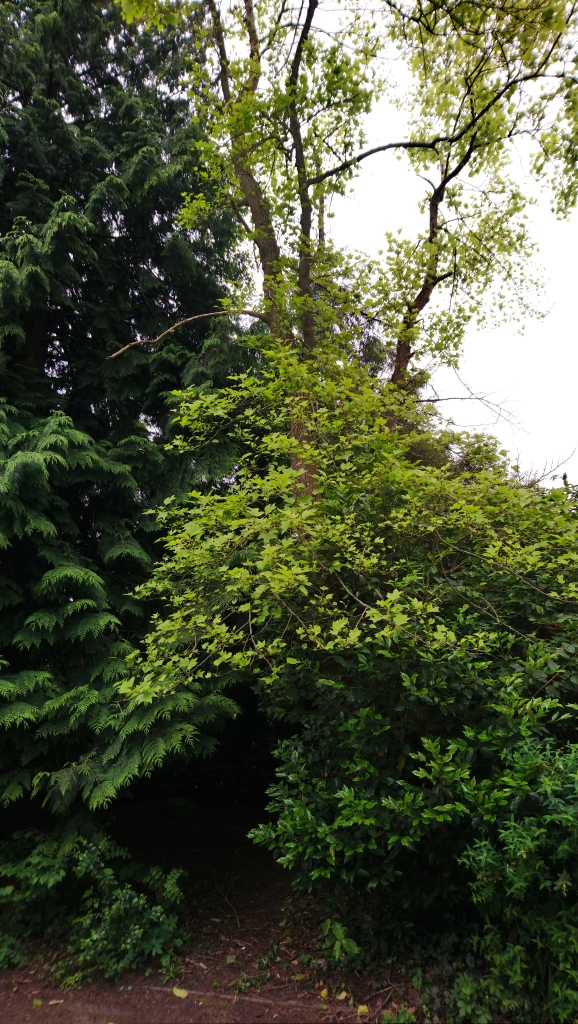
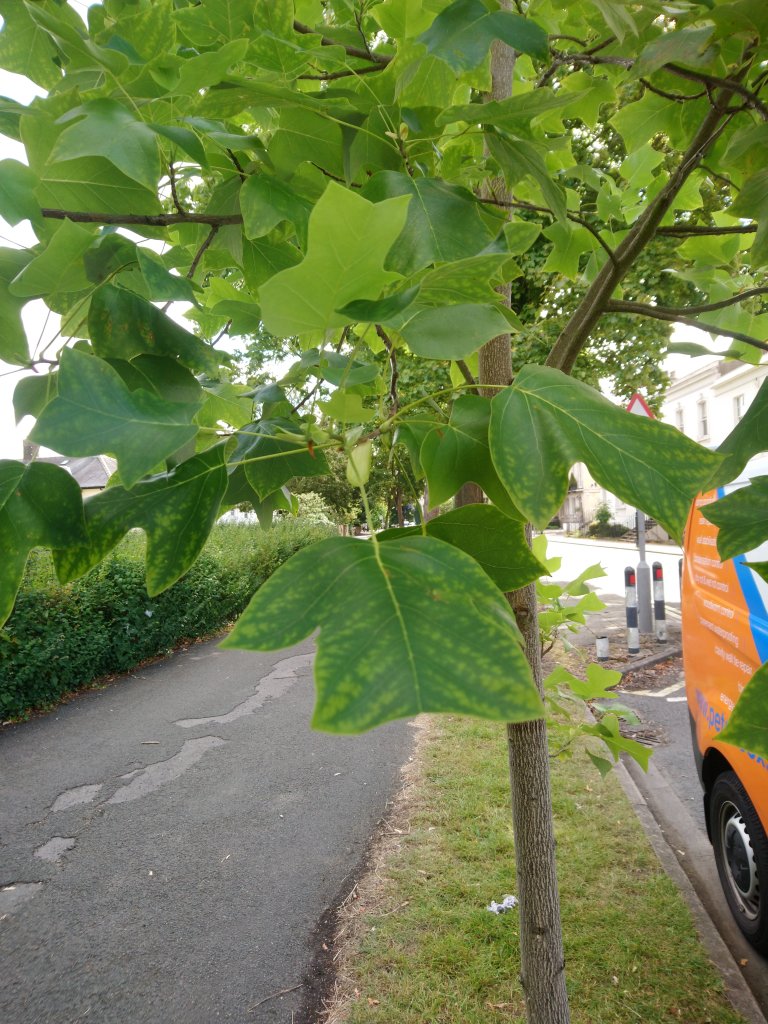
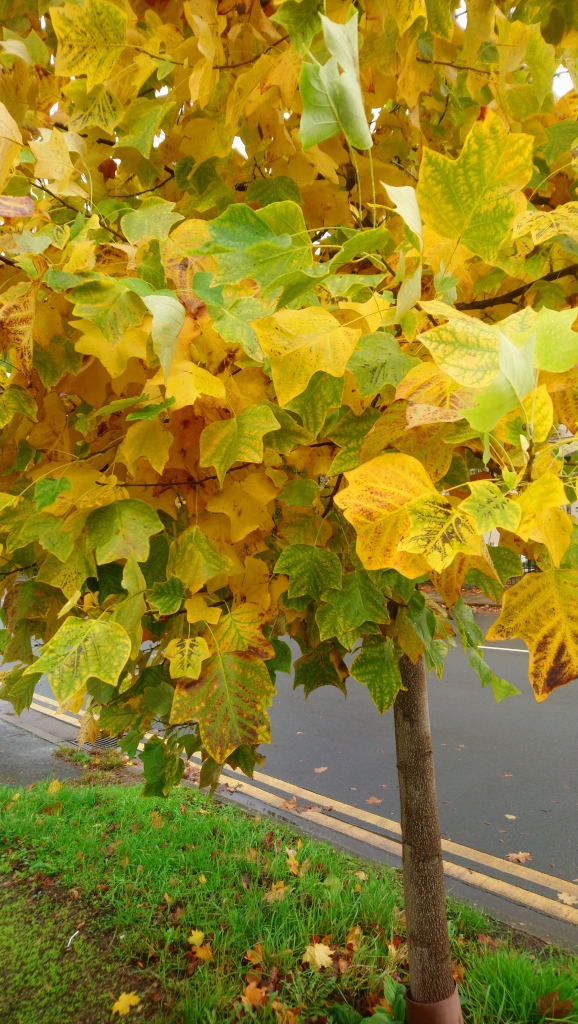

The leaves are large and very distinctively shaped. They are almost square at the apex.
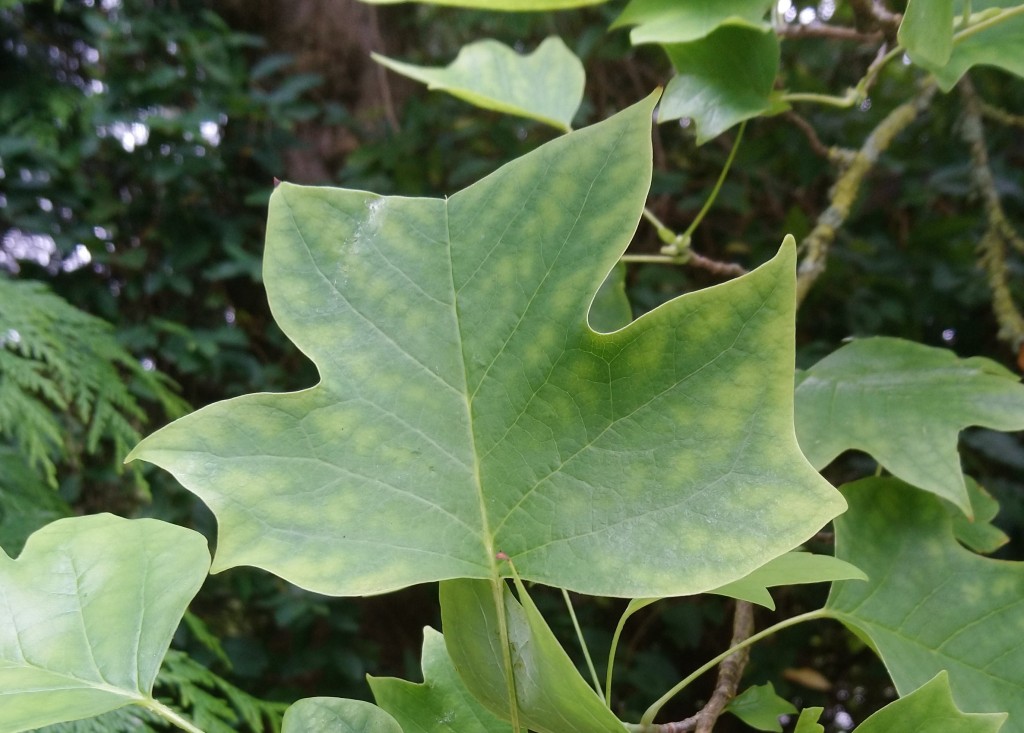

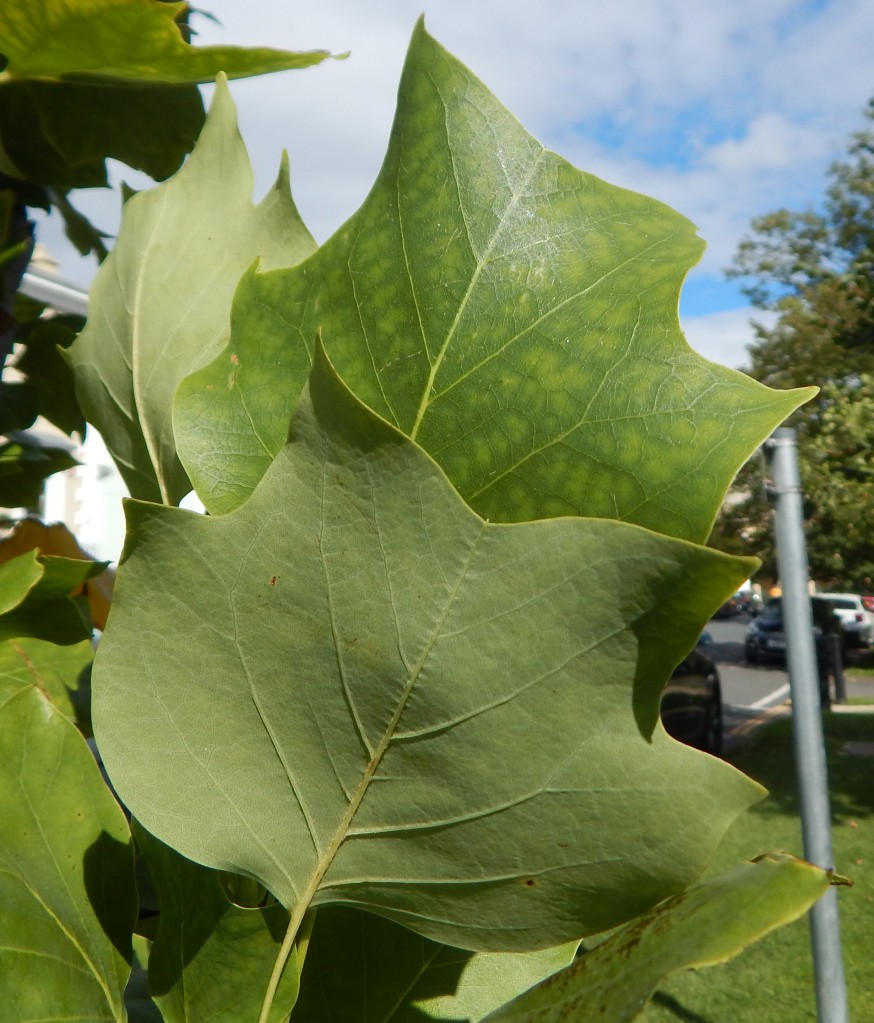

It flowers quite late, around June. Flowers are quite large, tulip shaped and coloured yellow-green. The sepals are green with orange bases.
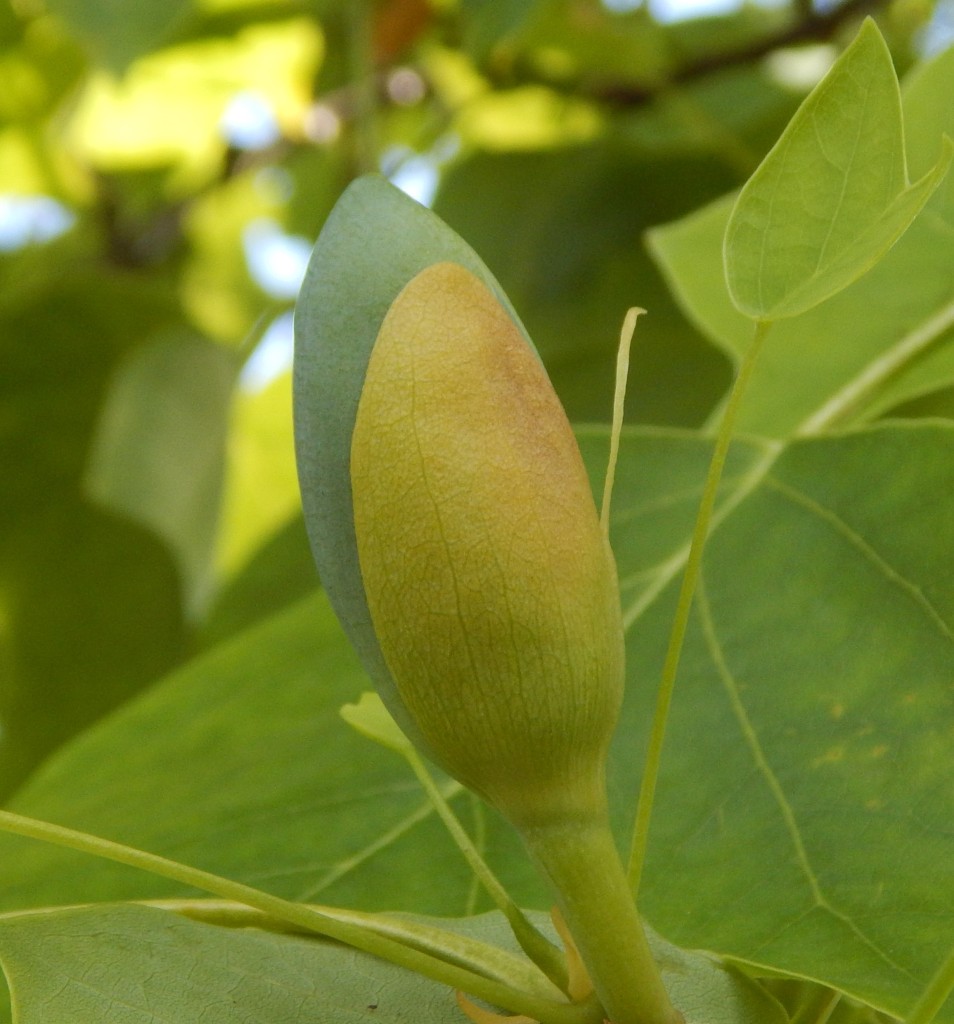
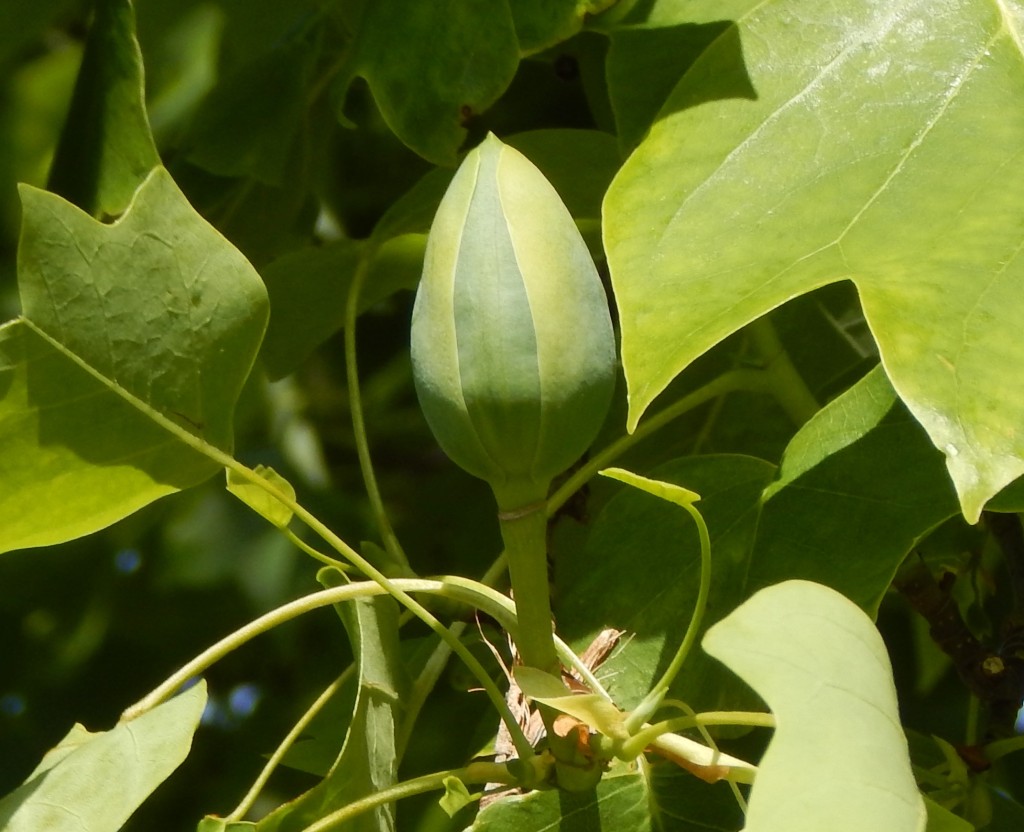
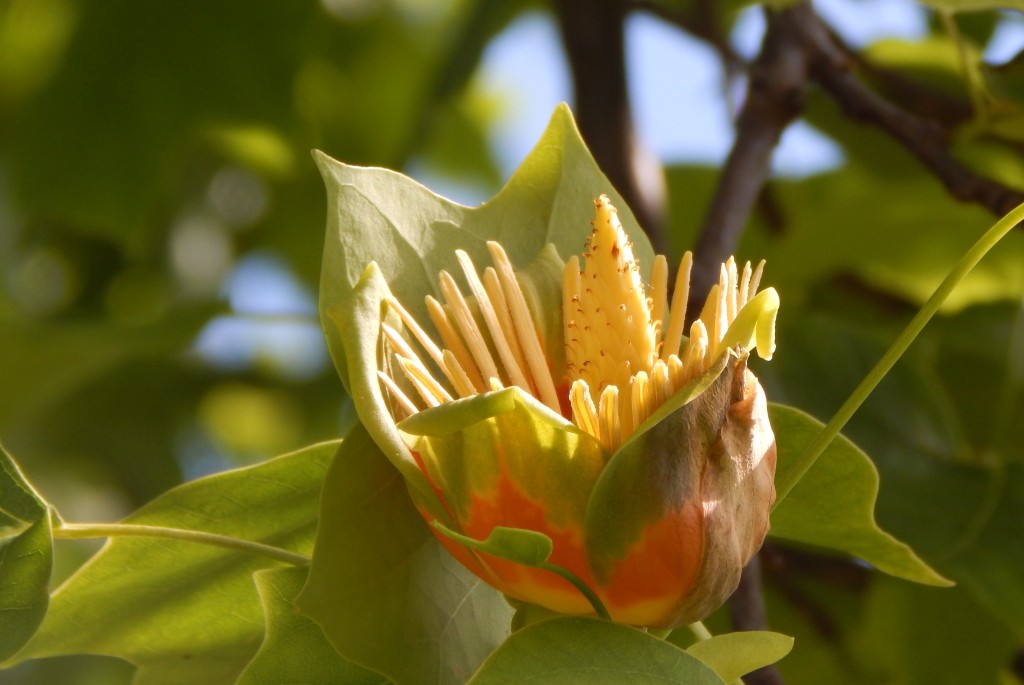
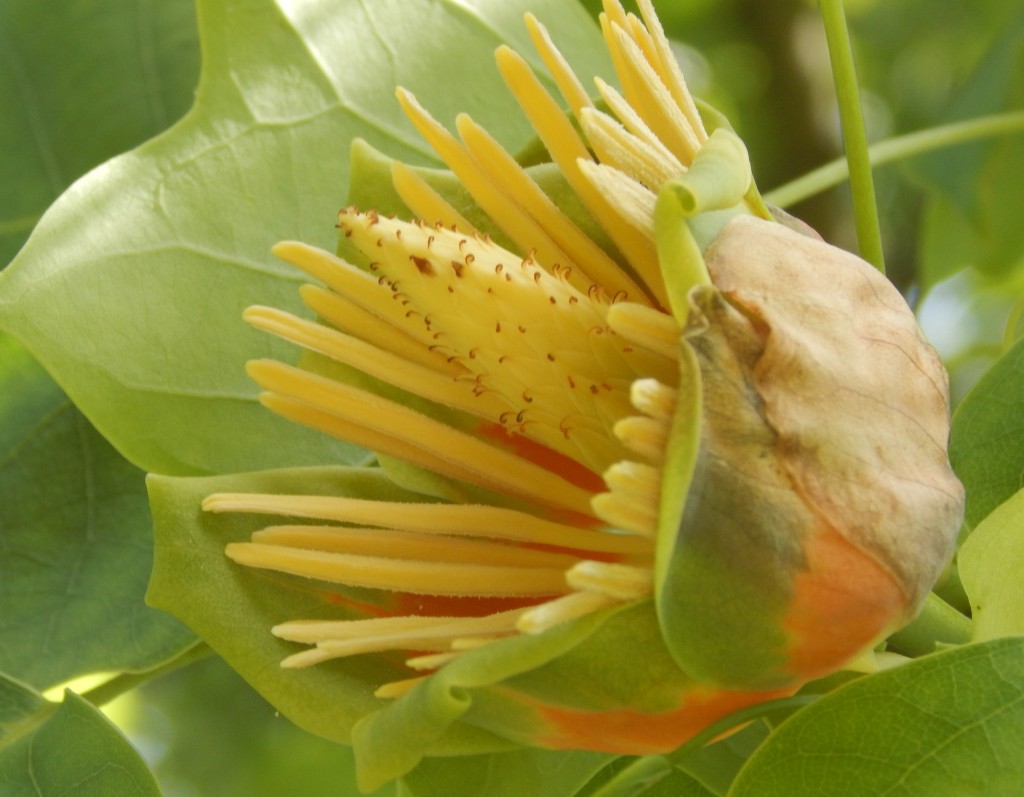
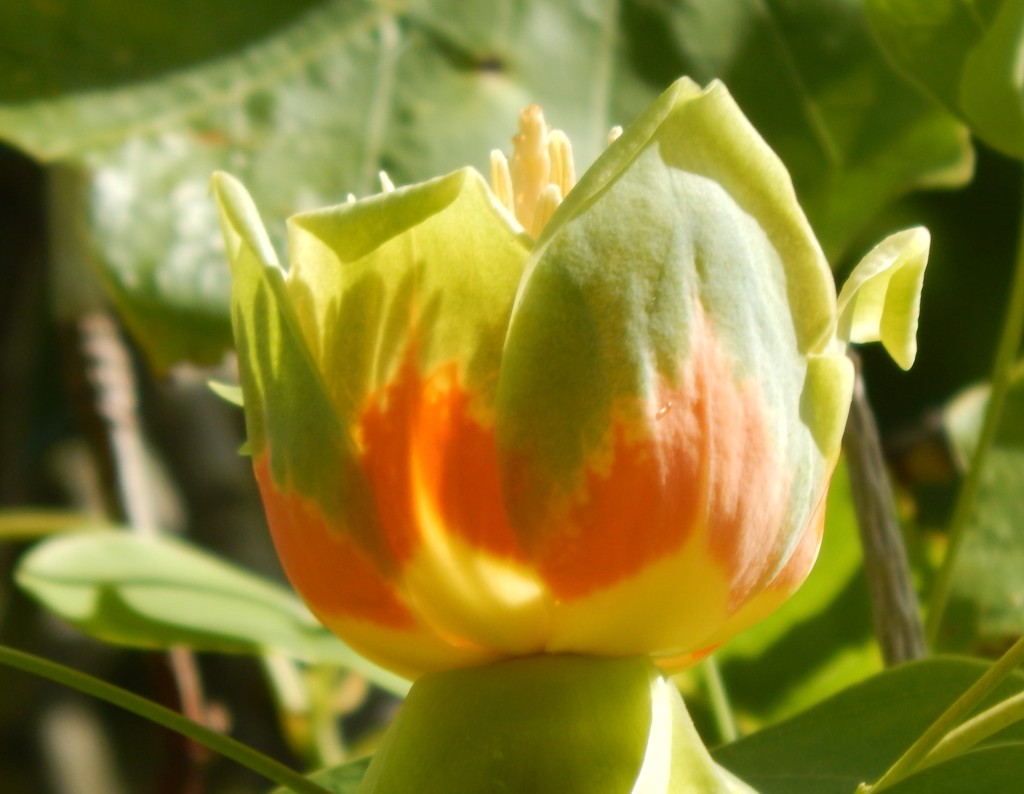
Habitat and use
Liriodendron tulipifera is native to the USA East of the Mississippi.
It is cultivated in parks and roadside verges and as a garden tree although it will grow too large for most domestic gardens. There are several varieties that can include some differences in the leaf and flower colouration, including variegated leaves.
Other Notes
The Tulip Tree is one of the species that had escaped my notice until I started this blog.
I was beginning to despair of finding a tree in flower when I walked past a tree that I pass often in our local park and noticed its odd shaped leaves. I had to look up to see if it was in flower. I found a few buds and just two or three very early flowers on this large tree. Many people must walk past it every day without noticing it.
See also
When I described the flowers, I was going to say that they are large flowers for a tree and I tried to think of other examples. There are some like [008] Horse-chestnuts that produce a large inflorescence made of small flowers, but the only large flowers I could think of were Magnolias, which are the nearest relatives of the Tulip Tree.
